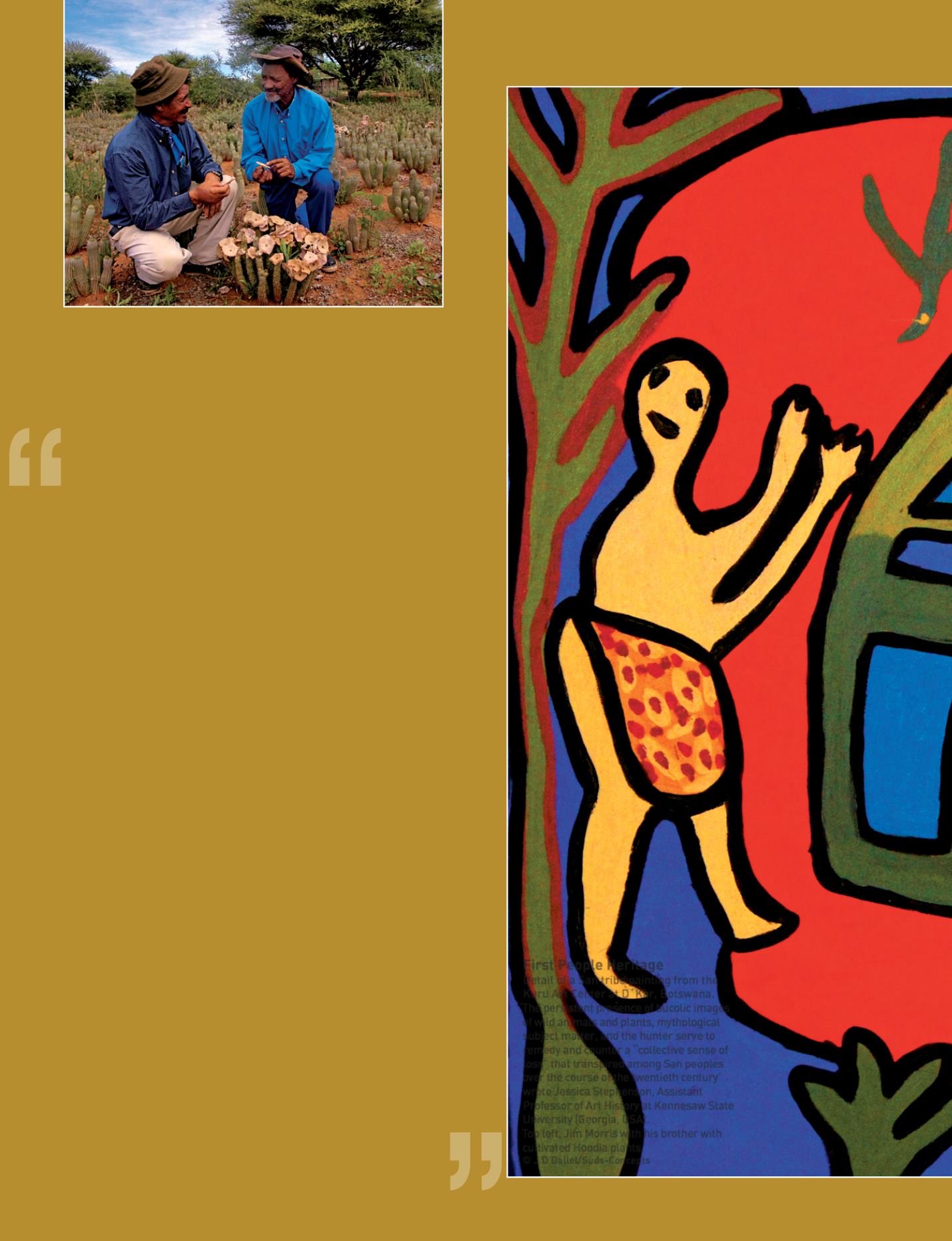
Jim Morris, representative from D’Kar, Ghanzi District,
Western Botswana.
D
’karwas startedasa farm, donated to theSancommunity
in 1964 by the Reformed Church of Namibia. We tried to
develop activities. In 1998, the Kuru Development Trust
was created to initiate agricultural, small business, educational
and cultural projects. In 2001 it joined the Kuru Family of
Organisations (KFO) working with San communities in Western
Botswana and South Africa to secure a positive future for
indigenous minorities.
D’kar is known internationally for its annual Kuru Dance festival
and art centre. San artists produce colourful oil paintings on
canvas, linoleumprints, etchings and lithographs. Their work is
presented at international exhibitions and museums. They use
traditional designs, but also produce original contemporary art.
They paint animals we respect: elephant, rhino, giraffe, elands
and ostriches… To increase their self-awareness and pride of
the young generation, we encourage them to paint. It is also a
way of expressing political and social preoccupations.
Another issue here concerns two unique plants, Harpago
or Devil’s Claw and Hoodia. Devil’s Claw has been used for
generations as a remedy for inflammation, pain and fever. It was
brought to Europe and used to improve digestion. Concerning
Hoodia, our forefathers used to take just a bite of this plant
before going hunting in the Kalahari Desert and they could walk
for days without eating or drinking.
Today it is considered as having potential as an appetite
suppressant. So the South African Council for Scientific
and Industrial Research (CSIR) patented Hoodia in 1998
and recognised in 2003 the San as owners of the traditional
knowledge about it. We are supposed to get 6%of royalties from
the sale of the active ingredient.
There have been agreements between the CSIR, the UK-based
company Phytopharmand the US giant Pfizer to commercialize
it. Even Unilever investigated Hoodia for its weight-loss diet
products. But, in the end, the San didn’t get much from these
unique plants.
Now Hoodia is listed in the Convention on International Trade
in Endangered Species (CITES). To protect it and get a decent
share of the business, we would like to start a farm to build up
a sustainable harvesting industry. But it turns out to be very
difficult for our community. We recognise that technology is
important but it will not actually bring out traditional knowledge
fromour people.Wewant not to loseour knowledgebutmaintain
our culture and the biodiversity of our ancestral land.
c
San knowledge
66 - Sustainable Development in Africa & Satellites
First People Heritage
Detail of a San tribe painting from the
Kuru Art Center at D´Kar, Botswana.
‘The persistent presence of bucolic images
of wild animals and plants, mythological
subject matter, and the hunter serve to
remedy and counter a “collective sense of
loss” that transpired among San peoples
over the course of the twentieth century’
wrote Jessica Stephenson, Assistant
Professor of Art History at Kennesaw State
University (Georgia, USA).
Top left, JimMorris with his brother with
cultivated Hoodia plants.
© J.D Dallet/Suds-Concepts


